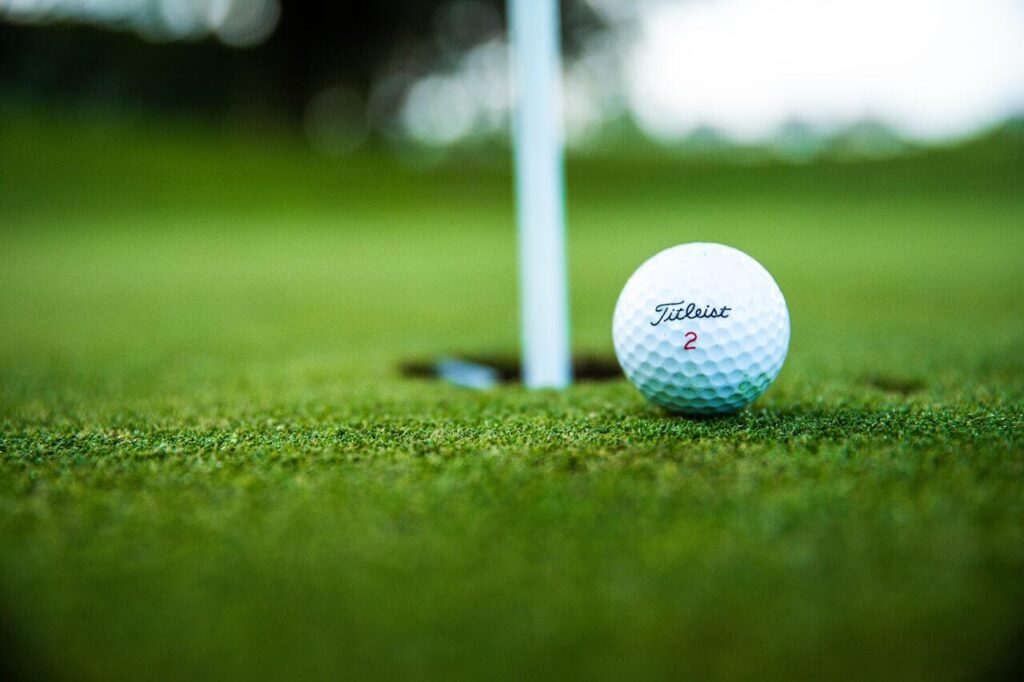Playing golf in windy conditions can be one of the most challenging aspects of the game. The wind can turn a straightforward round into a test of skill, strategy, and mental fortitude. Understanding how to adapt your technique and approach can make a significant difference in your performance. This guide will help you master windy golf conditions and turn a potential hindrance into an opportunity for improvement.
Table of Contents
Understanding Wind and Its Effects
Before delving into specific strategies, it’s important to understand how wind affects your golf game. Wind impacts ball flight in three main ways: direction, distance, and trajectory.
- Direction: Wind can push your ball off course, making accuracy more challenging. Crosswinds can cause the ball to drift left or right, while headwinds and tailwinds affect distance and height.
- Distance: A headwind reduces the distance your ball travels by increasing resistance, while a tailwind can add extra yards by pushing the ball forward.
- Trajectory: The wind can alter the ball’s height and flight path. High shots are more susceptible to wind, while low shots can cut through the wind more effectively.
Adjusting Your Stance and Swing
- Stance: In windy conditions, stability is key. Widen your stance slightly to maintain balance. This helps counteract the wind’s force and keeps you grounded during your swing. Bend your knees a bit more than usual to lower your center of gravity.
- Grip: Consider gripping the club a little tighter than usual to prevent it from being affected by sudden gusts. However, avoid gripping too tightly as it can reduce your swing fluidity.
- Swing: Focus on a smooth, controlled swing rather than a powerful one. A forceful swing can amplify the wind’s effect, leading to errant shots. A compact swing with a controlled follow-through can help maintain accuracy.
Controlling Trajectory
Controlling the trajectory of your shots is crucial in windy conditions. Lower shots are less affected by the wind and can provide more consistent results.
- Ball Position: Move the ball slightly back in your stance to encourage a lower ball flight. This helps keep the ball out of the wind and reduces the chance of it being blown off course.
- Club Selection: Use a lower-lofted club to hit a punch shot. This type of shot keeps the ball closer to the ground, minimizing the wind’s impact. For example, instead of using a 9-iron, opt for a 7-iron and make a shorter, controlled swing.
- Swing Mechanics: Shorten your backswing and follow-through to produce a more controlled, lower trajectory. This technique, often referred to as “knocking down” the ball, helps you maintain control in the wind.
Strategic Club Selection
Choosing the right club is vital when playing in the wind. The wind can affect the distance and direction of your shots, so adjust your club selection accordingly.
- Headwinds: Use one or two clubs more than usual to compensate for the reduced distance. For example, if you normally use a 7-iron for a particular distance, consider using a 5-iron instead.
- Tailwinds: Use one or two clubs less to avoid overshooting the target. A tailwind can add considerable distance, so plan accordingly.
- Crosswinds: Choose a club that allows you to control the ball’s flight and minimize drift. Aim upwind to counteract the wind’s push, and select a club that gives you confidence in your ability to control the shot.
Putting in the Wind
Putting in windy conditions requires extra attention to detail. The wind can influence the ball’s path on the green, making it more challenging to judge distance and break.
- Stability: Keep your stance stable and lower your center of gravity to prevent being swayed by the wind. This helps maintain a smooth, controlled putting stroke.
- Read the Wind: Observe how the wind is affecting the grass and the movement of leaves or flags around the green. Adjust your aim to account for the wind’s influence on the ball’s break.
- Control: Focus on a smooth, controlled stroke. If the wind is strong, you may need to aim slightly upwind to counteract its effect. Keep the ball low and close to the ground to minimize wind interference.
Mental Strategies
Playing in the wind can be mentally taxing, but maintaining a positive mindset is crucial.
- Stay Patient: Accept that the wind will introduce variability into your game. Stay patient and adapt to the conditions rather than getting frustrated.
- Visualization: Visualize successful shots and focus on executing your adjusted techniques. Confidence in your abilities and adjustments can significantly improve your performance.
- Learn and Adapt: Use each windy round as a learning experience. Pay attention to how different adjustments affect your shots and refine your strategy accordingly.
Practice To Master Windy Golf Conditions
Practicing in windy conditions is the best way to develop the skills needed to perform well in such environments. Spend time on the driving range hitting punch shots and practicing your balance. On the putting green, work on maintaining a stable stroke and adjusting for wind.
Conclusion: How To Master Windy Golf Conditions
Mastering windy golf conditions requires a combination of technical adjustments, strategic thinking, and mental toughness. By understanding how wind affects your game and practicing the necessary adjustments, you can turn a challenging round into an opportunity for improvement. Embrace the wind, refine your techniques, and watch your performance soar, regardless of the weather. Happy golfing!
FAQs: Master Windy Golf Conditions
How does wind direction affect my golf shots?
Wind direction significantly impacts your shots. A headwind can shorten the distance your ball travels, while a tailwind can add extra yards. Crosswinds can push your ball left or right, making accuracy more challenging. Understanding and adjusting for wind direction is crucial for effective shot planning.
What adjustments should I make to my stance in windy conditions?
To Master Windy Golf Conditions, adopt a more stable stance by widening your feet slightly. This helps maintain balance and control during your swing. Additionally, focus on a smooth, controlled swing rather than a powerful one, as wind can amplify the effects of a forceful swing.
How can I control the trajectory of my shots in the wind?
To control your trajectory, consider hitting lower shots to minimize the wind’s impact. This can be achieved by using a lower-lofted club and positioning the ball slightly back in your stance. Additionally, keeping your swing smooth and compact can help produce a lower, more penetrating ball flight.
What club adjustments are necessary for playing in strong winds?
In strong winds, club selection is vital. For headwinds, consider using one or two clubs more than usual to compensate for reduced distance. For tailwinds, use one or two clubs less. When dealing with crosswinds, select a club that allows you to control the ball’s direction and account for the wind’s push.
How do I adjust my putting in windy conditions?
Wind can affect putts, especially on exposed greens. To counteract this, keep your putting stroke smooth and controlled. If the wind is strong, you may need to aim slightly upwind to account for the ball being pushed off line. Additionally, focus on keeping the ball low and close to the ground to reduce wind interference.
How can I read greens effectively in windy conditions?
Reading greens in windy conditions requires extra attention. Observe how the wind is affecting the grass and any visible movement of leaves or flags. Consider how the wind might influence the ball’s break and speed. It’s essential to take more time to analyze these factors before making your putt.
Are there specific practice drills for windy conditions?
Yes, practicing in windy conditions can be highly beneficial. Focus on drills that emphasize control and trajectory. Practice hitting punch shots with lower trajectories and work on maintaining balance through your swing. Additionally, simulate different wind conditions on the practice green to improve your putting accuracy.
How can I maintain my confidence when playing in the wind?
Confidence to master windy golf conditions comes from preparation and practice. Trust in your adjusted techniques and focus on maintaining a positive mindset. Visualize successful shots and remind yourself of previous experiences where you have successfully navigated windy conditions. Consistent practice in the wind will also build your confidence.
What are common mistakes to avoid when playing in the wind?
Common mistakes include swinging too hard to compensate for the wind, not adjusting your stance or club selection, and failing to read the wind’s effect on the greens. Over-swinging can lead to loss of control, and inadequate adjustments can result in poor shot placement. Always take the time to assess and adjust for the wind properly.
How do professional golfers handle extremely windy conditions?
Professional golfers rely on experience and refined techniques to handle windy conditions. They focus on maintaining balance, using appropriate clubs, and hitting controlled, lower shots. Pros also spend more time assessing wind conditions before each shot and are adept at making quick adjustments to their strategy.
How can I keep my mental game strong in unpredictable wind?
Staying mentally strong in unpredictable wind involves focusing on what you can control. Accept that wind will introduce variability and concentrate on executing your adjusted technique. Stay patient, keep a positive attitude, and use each shot as a learning experience to refine your approach.



